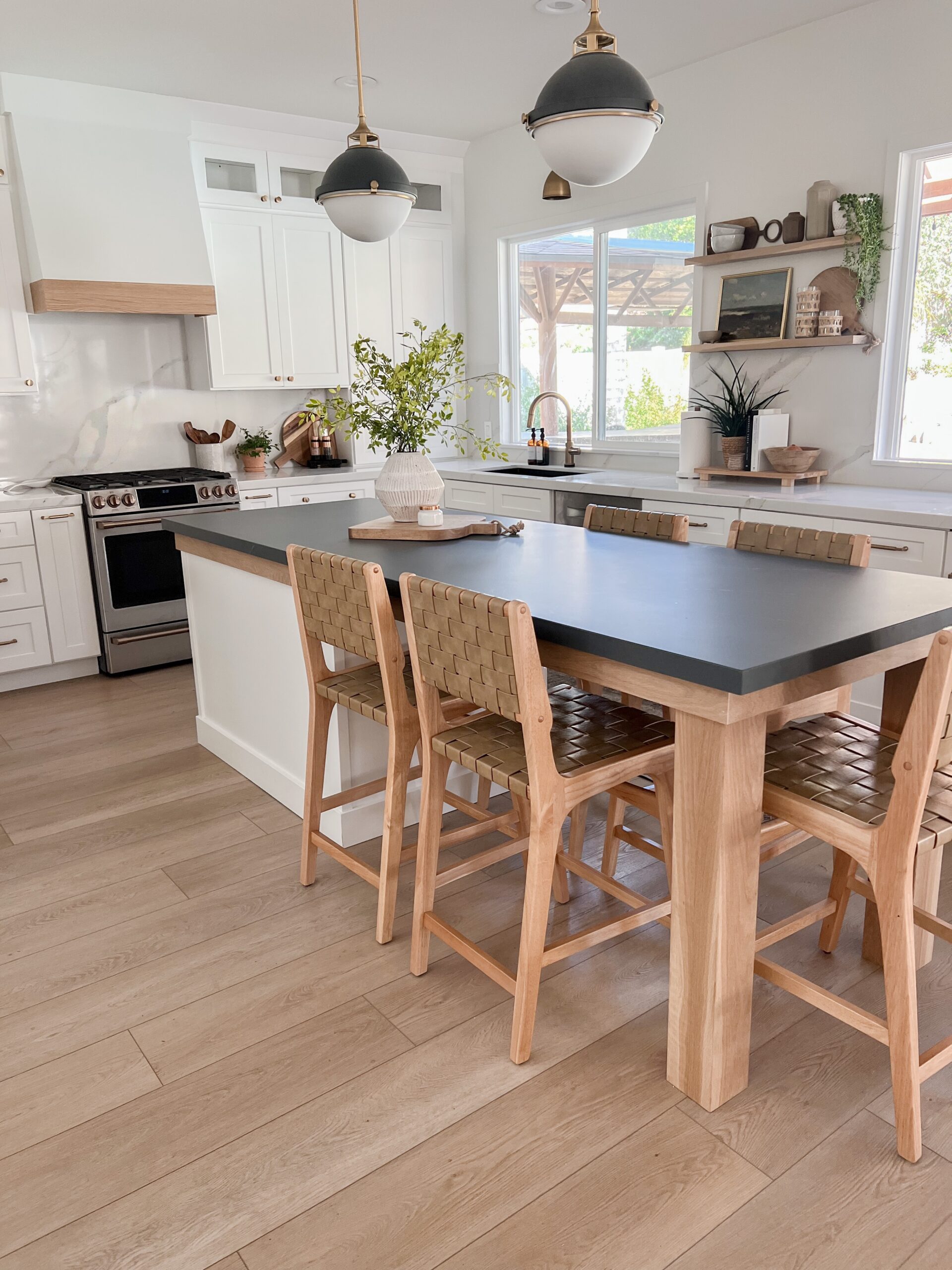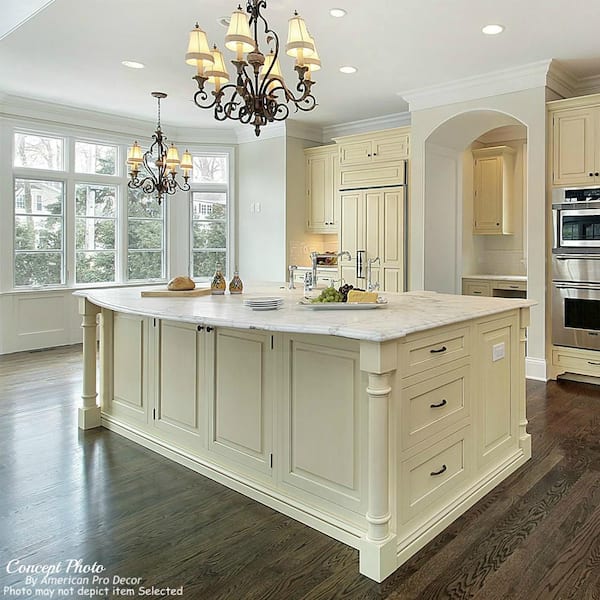Essential Aspects to Think About When Choosing Legs For Kitchen Island
Selecting the proper legs for a cooking area island includes a careful evaluation of several aspects that can substantially affect both functionality and visual charm. As we explore these components, it comes to be clear that each choice can have far-reaching implications for the general cooking area experience.
Product Options
When selecting legs for a cooking area island, recognizing the numerous product alternatives is crucial for accomplishing both visual appeal and architectural integrity (Legs For Kitchen Island). The choice of product considerably influences not just the resilience of the island however likewise its total style and functionality
Wood is a prominent selection, offering warmth and convenience. Strong woods, such as oak or maple, supply stamina and can be stained or painted to match the kitchen decoration. Steel legs, usually made from stainless-steel or functioned iron, contribute a modern-day and industrial feel while guaranteeing durability and stability. These products are resistant to use and can support substantial weight, making them optimal for larger islands.
An additional alternative is crafted products, like MDF or plywood, which can be much more cost-efficient while still offering a series of surfaces. They may not give the exact same level of security as solid wood or metal. Legs For Kitchen Island. Finally, products such as acrylic or glass can create a contemporary appearance, though they may require added assistance to make certain stability.
Eventually, the selection of product for kitchen island legs must line up with the wanted functionality and the general motif of the kitchen.
Style and Layout

When taking into consideration design, the shape and surface of the legs are important. Tapered legs can provide a sense of agility and sophistication, while thicker, a lot more durable legs can communicate toughness and stability. Additionally, the coating-- be it repainted, discolored, or natural-- ought to enhance the cabinetry and kitchen counter products to develop a unified look.
In addition, the design of the legs can additionally show personal taste. Customized or ornamental legs, such as those including elaborate carvings or unique geometric forms, can serve as centerpieces, adding personality and individuality to the kitchen area. Ultimately, the appropriate selection will not just enhance functionality yet additionally raise the visual charm, making the kitchen island a standout attribute of the home.
Height Considerations
Choosing the proper height for kitchen area island legs is crucial, as it directly affects both functionality and convenience. The standard elevation for a cooking area island normally varies from 36 to 42 inches, aligning with usual counter top elevations.

It is additionally important to account for customers' preferences and heights. Customizing the height can ensure a comfy experience for all household members, making the kitchen area island an extra pleasurable and practical room.
Weight Support
Making sure adequate weight support for cooking area island legs is crucial for both safety and security and performance. The kitchen area island usually serves numerous functions, including food prep work, eating, and added storage space, demanding a robust support framework. When picking legs, it is critical to think about the general weight capability needed based upon the island's planned usage and the products that will certainly be put on it.
The option of product for the legs plays a substantial role in their weight-bearing abilities. Strong wood, steel, and heavy-duty composites typically supply superior strength contrasted to lighter materials. Furthermore, the layout of the legs-- whether they are straight, tapered, or have Web Site a pedestal type-- can influence their capability to disperse weight effectively throughout the framework.
Furthermore, the leg placement ought to be strategically prepared to enhance security. Legs placed at the edges or with a larger base can better support much heavier tons. Always seek advice from the maker's specs concerning load limits to make certain that the legs can maintain the intended weight without jeopardizing security. In summary, choosing kitchen island legs with adequate weight support is vital for developing a useful and safe like it cooking space.
Installment and Upkeep
Correct installment and upkeep of kitchen area island legs are crucial for guaranteeing durability and stability. This typically entails securing the legs to the island base using appropriate bolts, guaranteeing that the legs are degree and lined up.
Once installed, normal upkeep is required to preserve the honesty and appearance of the legs - Legs For Kitchen Island. For wood legs, periodic cleansing with a damp cloth and application of suitable wood polish can stop wetness damage and maintain their surface. Metal legs may require a mild cleaning remedy to get rid of grease and gunk, followed by a completely dry fabric to stop rust formation
In addition, inspect the legs on a regular basis for signs of wear or damage, such as cracks or loosened joints. Tightening screws or screws as needed can additionally prolong the lifespan of the legs. By sticking to these installation and upkeep practices, homeowners can make certain that their cooking area island remains sturdy and visually appealing for several years to come.
Final Thought

Aesthetic coherence is extremely important in choosing the design and design of legs for a cooking area island, as these aspects substantially influence the general setting of the area. Tapered legs can provide a feeling of lightness and elegance, while thicker, much more robust legs can convey strength and stability.Selecting the proper height for kitchen area island legs is crucial, as it straight influences both capability and comfort. In summary, picking kitchen island legs with appropriate weight support is essential for creating a practical and secure culinary room.
In conclusion, selecting legs for a cooking area island demands careful consideration of various aspects, consisting of product choices, style, elevation, weight assistance, and installation.
 Erik von Detten Then & Now!
Erik von Detten Then & Now! Robbie Rist Then & Now!
Robbie Rist Then & Now! Lisa Whelchel Then & Now!
Lisa Whelchel Then & Now! Lucy Lawless Then & Now!
Lucy Lawless Then & Now! Peter Billingsley Then & Now!
Peter Billingsley Then & Now!